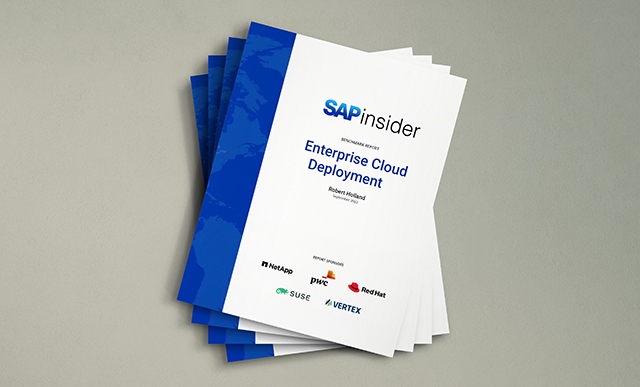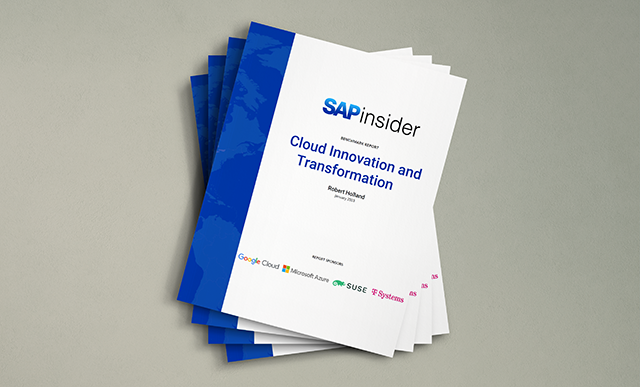AWS Named Leader in SAP HANA Infrastructure Services by ISG
Meet the Authors
Key Takeaways
⇨ AWS has been recognized as a Leader in the ISG Provider Lens SAP HANA Infrastructure Services report for the seventh consecutive year, excelling in performance, automation, and support for SAP S/4HANA workloads at scale.
⇨ The adoption of AWS for SAP workloads has resulted in significant efficiency gains for U.S. enterprises, achieving around 30% IT infrastructure cost savings and reducing both planned and unplanned downtime.
⇨ AWS leverages Generative AI to enhance SAP operations through intelligent automation, providing multicloud flexibility for risk management, and supporting GreenOps practices to reduce costs and carbon footprints.
In ISG’s latest ISG Provider Lens SAP HANA Infrastructure Services report, Amazon Web Services (AWS) was named a Leader for its performance, automation, and support for SAP S/4HANA workloads at scale. ISG has recognized AWS for the seventh straight year for its SAP Infrastructure-as-a-Service (IaaS) and Platform-as-a-Service (PaaS) solutions.
The report assesses service providers that offer SAP product hosting, especially SAP S/4HANA, within public cloud environments using SAP-certified infrastructure services. It emphasizes AWS’s extensive range of infrastructure options and highlights its leadership in deploying generative AI (GenAI) to improve SAP workloads in the public cloud.
“AWS offers the most secure and robust public cloud infrastructure to operate mission-critical SAP workloads,” said ISG Principal Analyst Shashank Rajmane. “It enables enterprises to perform automated migrations with ease and streamline operations through its large service portfolio.”
Explore related questions
AWS Strengths in Infrastructure Services
According to ISG, many U.S. enterprises have achieved significant efficiency gains by migrating their SAP workloads to AWS, with average IT infrastructure cost savings of around 30%. Early adopters also report avoiding both planned and unplanned downtime, which previously slowed operations on legacy SAP systems. These improvements enable organizations to reallocate resources toward innovation and value-creating activities, rather than managing outdated infrastructure.
AWS provides flexibility in SAP transformation, supporting various migration strategies including lift-and-shift, ECC on AnyDB to Suite on HANA, and complete S/4HANA conversions. Its extensive partner network and extensive experience aim to ensure that enterprises can confidently choose a migration approach that fits their business and technical needs.
Performance optimization is another key differentiator for AWS, particularly with its Nitro System and EC2 High Memory instances, which deliver up to 15% better performance for SAP workloads. These infrastructure improvements are further enhanced by GenAI capabilities that automate routine tasks, such as resource allocation and backup management. AWS also provides SDKs for ABAP and BTP editions, making it easier to connect SAP systems with a wider range of AWS services.
What This Means for SAPinsiders
GenAI enables smarter, faster SAP operations in the cloud. AWS’s GenAI-powered infrastructure introduces intelligent automation to core SAP tasks, assisting IT teams in dynamically allocating resources, improving performance, and reducing manual oversight. For large-scale SAP environments, this means faster insights, fewer outages, and significant infrastructure savings after migration. With GenAI automating cost and performance management, IT leaders can redirect resources toward innovation.
Multicloud flexibility lowers risk and boosts resilience. Enterprises are increasingly designing their SAP strategies to avoid lock-in and maximize uptime by adopting multicloud and hybrid cloud frameworks. Providers like AWS support this transition with flexible pricing models, certified infrastructure, and extensive partner ecosystems. SAPinsiders should prioritize vendors such as AWS offering cross-platform tools, strong integration capabilities, and presales architecture planning.
GreenOps frameworks lower costs and carbon footprints. According to the ISG report, AWS supports GreenOps practices to optimize resources by emphasizing sustainability metrics, encouraging smarter cloud region selections, serverless computing, and energy-efficient operations. Enterprises aligning their SAP infrastructure with these dual frameworks can reduce the total cost of ownership while meeting ESG goals. SAPinsiders evaluating cloud providers should ask about native support for GreenOps tools, automated monitoring, and sustainability dashboards.






